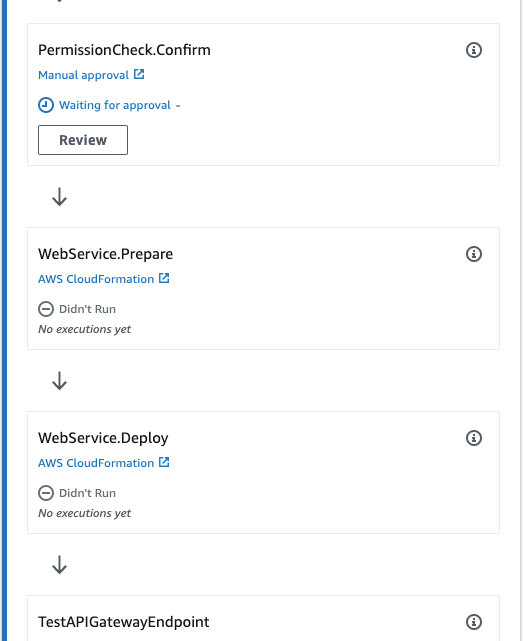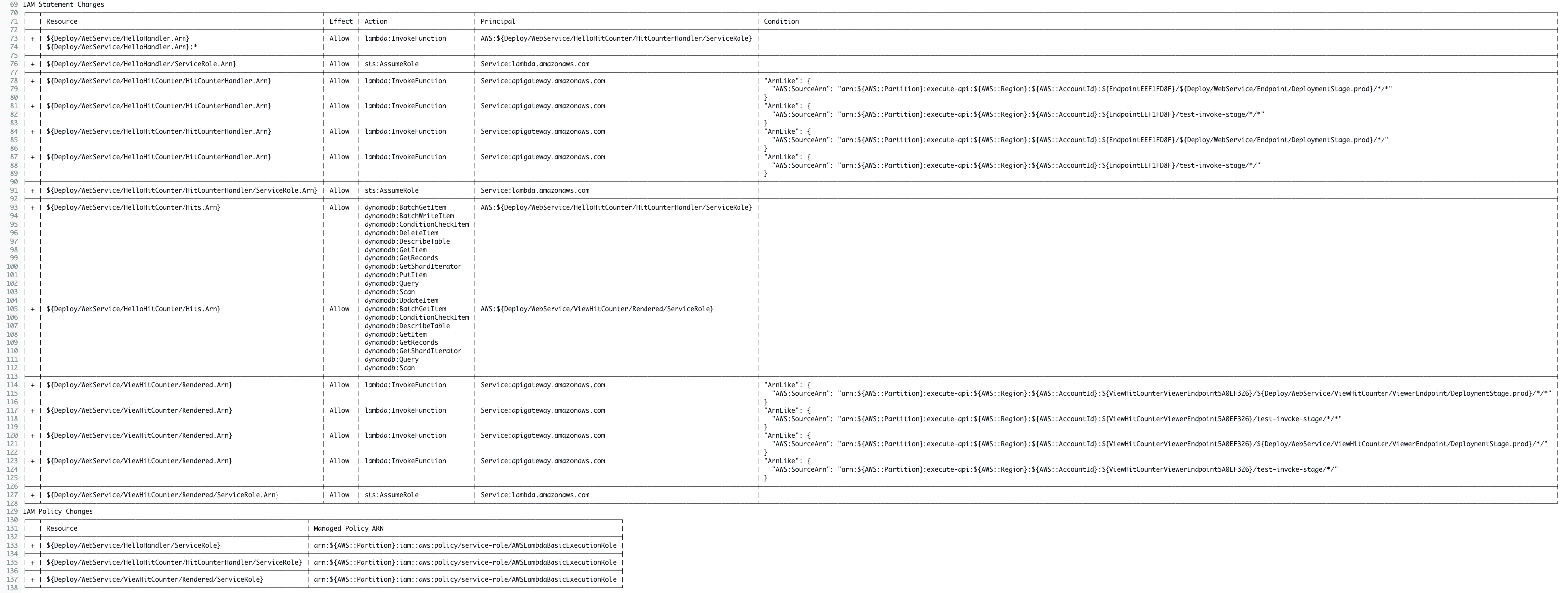
Manually Approving Security Changes in CDK Pipeline
January 20, 2023In this post I will show you how to add a manual approval to AWS Cloud Development Kit (CDK) Pipelines to confirm security changes before deployment. With this solution, when a developer commits a change, CDK pipeline identifies an IAM permissions change, pauses execution, and sends a notification to a security engineer to manually approve or reject the change before it is deployed.
Introduction
In my role I talk to a lot of customers that are excited about the AWS Cloud Development Kit (CDK). One of the things they like is that L2 constructs often generate IAM and other security policies. This can save a lot of time and effort over hand coding those policies. Most customers also tell me that the policies generated by CDK are more secure than the policies they generate by hand.
However, these same customers are concerned that their security engineering team does not know what is in the policies CDK generates. In the past, these customers spent a lot of time crafting a handful of IAM policies that developers can use in their apps. These policies were well understood, but overly permissive because they were often reused across many applications.
Customers want more visibility into the policies CDK generates. Luckily CDK provides a mechanism to approve security changes. If you are using CDK, you have probably been prompted to approve security changes when you run cdk deploy at the command line. That works great on a developer’s machine, but customers want to build the same confirmation into their continuous delivery pipeline. CDK provides a mechanism for this with the ConfirmPermissionsBroadening action. Note that ConfirmPermissionsBroadening is only supported by the AWS CodePipline deployment engine.
Background
Before I talk about ConfirmPermissionsBroadening, let me review how CDK creates IAM policies. Consider the “Hello, CDK” application created in AWS CDK Workshop. At the end of this module, I have an AWS Lambda function and an Amazon API Gateway defined by the following CDK code.
Note that I did not need to define the IAM Role or Lambda Permissions. I simply passed a refence to the Lambda function to the API Gateway (line 10 above). CDK understood what I was doing and generated the permissions for me. For example, CDK generated the following Lambda Permission, among others.
Notice that CDK generated a narrowly scoped policy, that allows a specific API (line 10 above) to call a specific Lambda function (line 7 above). This policy cannot be reused elsewhere. Later in the same workshop, I created a Hit Counter Construct using a Lambda function and an Amazon DynamoDB table. Again, I associated them using a single line of CDK code.
As in the prior example, CDK generated a narrowly scoped IAM policy. This policy allows the Lambda function to perform certain actions (lines 4-11) on a specific table (line 14 below).
As you can see, CDK is doing a lot of work for me. In addition, CDK is creating narrowly scoped policies for each resource, rather than sharing a broadly scoped policy in multiple places.
CDK Pipelines Permissions Checks
Now that I have reviewed how CDK generates policies, let’s discuss how I can use this in a Continuous Deployment pipeline. Specifically, I want to allow CDK to generate policies, but I want a security engineer to review any changes using a manual approval step in the pipeline. Of course, I don’t want security to be a bottleneck, so I will only require approval when security statements or traffic rules are added. The pipeline should skip the manual approval if there are no new security rules added.
Let’s continue to use CDK Workshop as an example. In the CDK Pipelines module, I used CDK to configure AWS CodePipeline to deploy the “Hello, CDK” application I discussed above. One of the last things I do in the workshop is add a validation test using a post-deployment step. Adding a permission check is similar, but I will use a pre-deployment step to ensure the permission check happens before deployment.
First, I will import ConfirmPermissionsBroadening from the pipelines package
Then, I can simply add ConfirmPermissionsBroadening to the deploySatage using the addPre method as follows.
Once I commit and push this change, a new manual approval step called PermissionCheck.Confirm is added to the Deploy stage of the pipeline. In the future, if I push a change that adds additional rules, the pipeline will pause here and await manual approval as shown in the screenshot below.

Figure 1. Pipeline waiting for manual review
When the security engineer clicks the review button, she is presented with the following dialog. From here, she can click the URL to see a summary of the change I am requesting which was captured in the build logs. She can also choose to approve or reject the change and add comments if needed.

Figure 2. Manual review dialog with a link to the build logs
When the security engineer clicks the review URL, she is presented with the following sumamry of security changes.
The final feature I want to add is an email notification so the security engineer knows when there is something to approve. To accomplish this, I create a new Amazon Simple Notification Service (SNS) topic and subscription and associate it with the ConfirmPermissionsBroadening Check.
With the notification configured, the security engineer will receive an email when an approval is needed. She will have an opportunity to review the security change I made and assess the impact. This gives the security engineering team the visibility they want into the policies CDK is generating. In addition, the approval step is skipped if a change does not add security rules so the security engineer does not become a bottle neck in the deployment process.
Conclusion
AWS Cloud Development Kit (CDK) automates the generation of IAM and other security policies. This can save a lot of time and effort but security engineering teams want visibility into the policies CDK generates. To address this, CDK Pipelines provides the ConfirmPermissionsBroadening action. When you add ConfirmPermissionsBroadening to your CI/CD pipeline, CDK will wait for manual approval before deploying a change that includes new security rules.
About the author:

